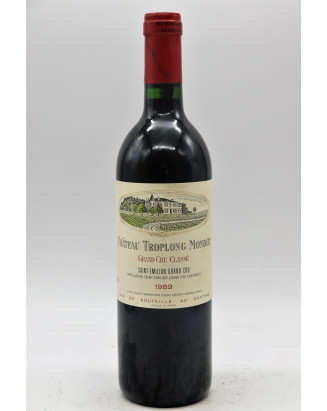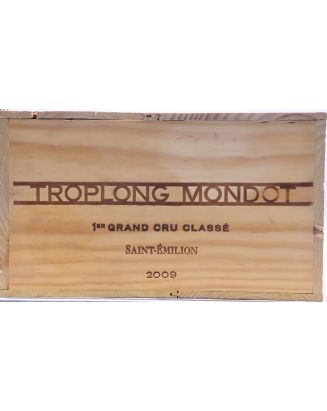







Château Troplong Mondot has a history dating back to the 17th century. The estate, initially known as Mondot, was created by Abbot Raymond de Sèze, who built a magnificent château there in 1745. The estate truly came into its own in the 19th century, when Raymond-Théodore Troplong, an influential figure in French politics and President of the Senate, became the owner. Under his impetus, the vineyard developed to reach its current configuration of 43 hectares.
In 1936, the Valette family became owners of the estate. Christine Valette, from 1980 onwards, played a decisive role in the evolution of Château Troplong Mondot, reintroducing manual viticulture methods and modernising the cellars. Under her leadership, Troplong Mondot was promoted to Premier Grand Cru Classé in 2006. Christine's untimely death in 2014 marked a transition, but her legacy lives on through the excellence of the estate's wines.
In 2017, the estate was acquired by SCOR, a French reinsurance group, which entrusted the management to Aymeric de Gironde. Drawing on his experience at Cos d'Estournel, Aymeric has brought new momentum whilst preserving the estate's traditional values.
The 2005 vintage of Château Troplong Mondot received 100/100 from Robert Parker. The 2020, 1990, 2010 and 2019 vintages, rated 98/100, confirm the continued excellence of this vintage.
Château Troplong Mondot benefits from a unique terroir in Saint-Émilion, located on the famous Mondot hill, which reaches an altitude of 110 metres. It is one of the highest points of the appellation, thus offering ideal conditions for viticulture. The diversity of soils, composed mainly of clay, limestone and flint fragments, gives the wines incomparable complexity and depth.
The vineyard extends over 43 hectares in a single block, making it one of the largest estates in the appellation. The grape varieties are mainly Merlot (85%), with Cabernet Sauvignon (13%) and a small proportion of Cabernet Franc (2%). This varied blend allows the production of wines with rich aromas and powerful structure, whilst preserving great elegance.
Biodiversity has been a priority at Château Troplong Mondot for over two decades. Hedges, forests and dry stone walls have been preserved to promote the natural habitat of local fauna. Since 2007, Lydia and Claude Bourguignon, experts in soil microbiology, have been conducting regular studies to sustainably enhance the terroir. Eight draught horses, used to reduce soil compaction, roam the estate's vineyards between March and November, replacing tractors, in line with environmentally friendly agriculture.
Winemaking methods at Château Troplong Mondot have been modernised over the years to better reflect the typicity of the terroir. The estate is equipped with a state-of-the-art cellar, consisting of 42 gravity-fed stainless steel vats of different sizes, allowing for very precise plot-by-plot vinification. This enables each vineyard plot to reveal its maximum potential in the final blends.
The emphasis is on precision and finesse, contrasting with the formerly more massive style of Troplong Mondot wines. Vinification takes place in stainless steel vats, with rigorous temperature controls. Ageing is carried out in French oak barrels, of which about 65% are new, for 16 to 24 months, depending on the characteristics of the vintage. This meticulous ageing process creates balanced wines with tight tannins and great ageing potential.
Since 2017, the style of the wines has evolved towards greater freshness and finesse, with a notable reduction in extraction and use of wood. The result is a more precise wine with more delicate aromas, whilst retaining the complexity and richness characteristic of the estate.
Château Troplong Mondot produces two main cuvées:
Château Troplong Mondot
This Premier Grand Cru Classé of Saint-Émilion is the estate's flagship wine. It is distinguished by its power, density and structure. Aromas of black fruits, liquorice, coffee, flowers and stone combine to offer a complex and harmonious tasting experience. The tight tannins give the wine a remarkable ageing capacity, allowing wine enthusiasts to keep it for several decades. Recent vintages, particularly from 2018 onwards, show a more refined style, with reduced concentration and a more subtle use of wood.
Le Mondot
The estate's second wine, Le Mondot, is made with the same care as its elder sibling, but with a more supple and accessible approach. It offers fresher aromas, with notes of red fruits and a lighter texture. Perfect for drinking in its youth, Le Mondot appeals with its elegance and drinkability, whilst retaining a beautiful complexity.
Saint-Émilion, a jewel of the Bordeaux wine region, has produced vintages of exceptional quality over the years, delighting connoisseurs of fine wines. Among the legendary vintages, one can cite 1947, 1959, and 1961, true icons that have marked the history of Bordeaux wines. The famous 1982 remains an undisputable reference. The following decades were equally impressive, with remarkable vintages such as 1990, 1995, 1998, 2000, 2001, 2003, and 2005, all acclaimed for their richness and ageing potential. More recently, the 2008, 2009, 2010, 2012, 2014, 2015, 2016, 2018, 2019, and 2020 vintages have shone through their balance and depth, reaffirming Saint-Émilion's reputation as one of Bordeaux's most sought-after appellations, where each new year continues to captivate fine wine enthusiasts with its consistent quality and elegance.
The classification of Saint-Émilion's Premiers Grands Crus Classés B, reviewed every 10 years, highlights exceptional châteaux from the Right Bank vineyard. Among those that continue to feature in this prestigious category are emblematic names such as Château Beau-Séjour Bécot, Château Beauséjour Héritiers Duffau Lagarrosse, Château Bélair-Monange, Château Canon, Château Pavie-Macquin, Château Troplong-Mondot, Château Trottevieille, and Clos Fourtet. Others, promoted in 2012, such as Château Canon-La-Gaffelière, Château Larcis-Ducasse, Château La Mondotte, and Château Valandraud, also illustrate the ever-increasing quality of the region's growths. However, some châteaux are no longer classified, such as La Gaffelière (since 2022) and Magdelaine (since 2006). This constant renewal ensures the excellence and evolution of the Saint-Émilion vineyard, where tradition and innovation blend harmoniously.
Château Troplong Mondot embodies the excellence of Saint-Émilion wines, with an exceptional terroir and a history rich in traditions. Thanks to the constant efforts of its team, the estate continues to produce high-quality wines, combining power, elegance and finesse. The modernisation of infrastructure and environmentally friendly viticultural practices allow the estate to remain at the forefront of innovation, whilst remaining true to its heritage.